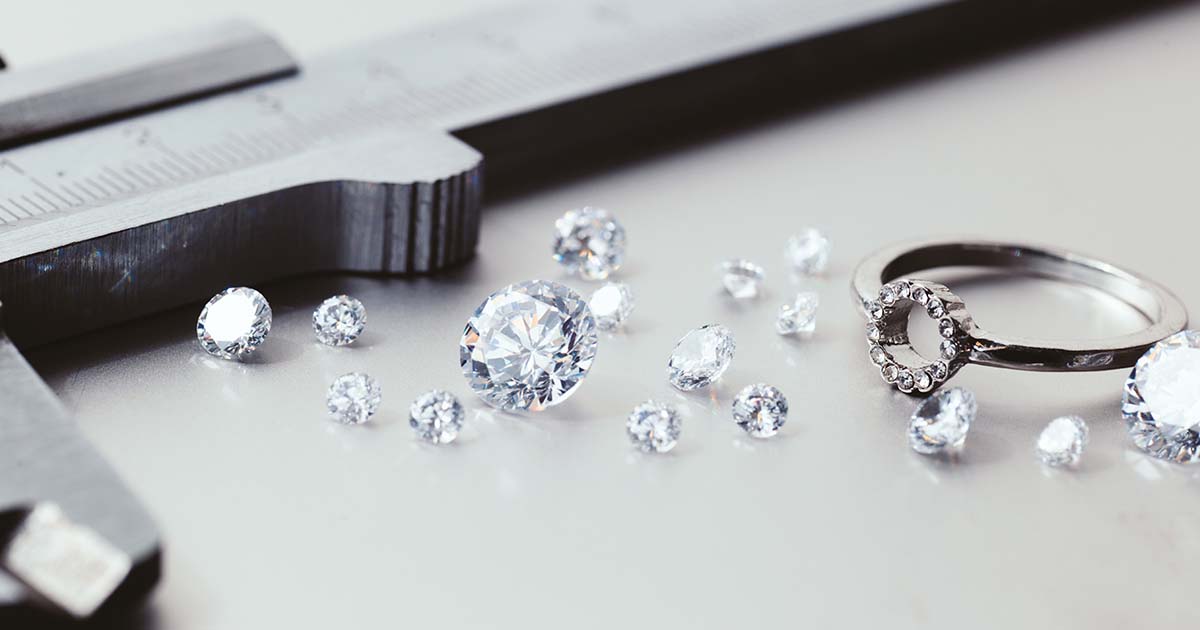
Table of Contents
Introduction
In the world of diamonds, there’s a fascinating debate that often arises: natural diamonds versus lab-grown diamonds. Both are stunning, durable, and carry their own allure, but what sets them apart? Let’s embark on a journey to uncover the nuances and distinctions between these two mesmerizing gems.
1. Origins and Formation
1.1 Natural Diamonds
Natural diamonds, as the name suggests, are formed deep within the Earth’s mantle over billions of years. They’re the result of intense heat and pressure acting upon carbon atoms, crystallizing into the dazzling gemstones we know and love.
1.2 Lab-Grown Diamonds
On the other hand, lab-grown diamonds are created through innovative technological processes within controlled laboratory environments. These diamonds share the same chemical composition and crystal structure as their natural counterparts but are cultivated in a fraction of the time.
2. Composition and Quality
2.1 Natural Diamonds
One of the key factors that distinguish natural diamonds is their inherent uniqueness. Each natural diamond possesses its own distinct characteristics, including imperfections called inclusions and features like color, clarity, cut, and carat weight (the famous “4 Cs”).
2.2 Lab-Grown Diamonds
Lab-grown diamonds, while sharing the same chemical and optical properties as natural diamonds, often exhibit fewer imperfections due to the controlled conditions in which they’re cultivated. This can result in diamonds with exceptional clarity and consistency.
3. Environmental Impact
3.1 Natural Diamonds
The extraction of natural diamonds involves mining, which can have significant environmental repercussions, including habitat destruction, soil erosion, and water pollution. Additionally, the process consumes vast amounts of energy and resources.
3.2 Lab-Grown Diamonds
In contrast, lab-grown diamonds generally have a lower environmental impact. The production process requires less energy and water and produces fewer carbon emissions. This makes them a more sustainable and eco-friendly alternative to natural diamonds.
4. Ethical Considerations
4.1 Natural Diamonds
The diamond industry has long been plagued by concerns regarding ethical sourcing, 천연과 랩다이아의 차이, particularly related to issues such as child labor, worker exploitation, and conflict diamonds (diamonds mined in war zones and sold to finance armed conflict).
4.2 Lab-Grown Diamonds
Lab-grown diamonds offer a more ethically sound option for consumers concerned about the origins of their gemstones. Since they’re created in controlled laboratory settings, there’s no risk of supporting unethical practices or contributing to conflict zones.
5. Cost and Affordability
5.1 Natural Diamonds
Traditional natural diamonds are often associated with high price tags due to their rarity and the costs associated with mining and distribution. Prices can vary significantly based on factors such as size, quality, and market demand.
5.2 Lab-Grown Diamonds
Lab-grown diamonds, while still valuable, tend to be more affordable than their natural counterparts. The controlled production process allows for more predictable pricing, making them accessible to a broader range of consumers.
6. Market Trends and Consumer Preferences
6.1 Natural Diamonds
Natural diamonds have long been revered for their rarity, beauty, and cultural significance. Despite growing interest in lab-grown alternatives, natural diamonds continue to hold a special place in the hearts of many consumers, particularly for milestone events like engagements and weddings.
6.2 Lab-Grown Diamonds
Lab-grown diamonds have been gaining traction in recent years, driven by factors such as sustainability, affordability, and technological advancements. Younger generations, in particular, are increasingly drawn to the idea of purchasing ethically and environmentally responsible jewelry.
7. Perception and Prestige
7.1 Natural Diamonds
There’s a certain prestige associated with natural diamonds, stemming from their centuries-old allure and status as symbols of wealth, love, and commitment. For some, the allure of owning a rare and naturally formed diamond is unparalleled.
7.2 Lab-Grown Diamonds
While lab-grown diamonds may lack the historical mystique of natural diamonds, they’re gaining recognition for their innovation, sustainability, and modern appeal. As technology continues to improve, lab-grown diamonds are becoming increasingly indistinguishable from their natural counterparts.
8. Durability and Longevity
8.1 Natural Diamonds
Natural diamonds are renowned for their exceptional hardness and durability, making them ideal for everyday wear and heirloom pieces that can be passed down through generations. With proper care, they can retain their brilliance and beauty for a lifetime.
8.2 Lab-Grown Diamonds
Similarly, lab-grown diamonds boast the same impressive durability as natural diamonds. Their chemical composition and crystal structure ensure that they’re equally capable of withstanding the rigors of daily wear and maintaining their luster over time.
9. Certification and Authentication
9.1 Natural Diamonds
Natural diamonds are typically accompanied by certificates from reputable gemological laboratories, man made diamonds, verifying their authenticity and providing details about their quality characteristics. These certificates serve as assurances of the diamond’s value and authenticity.
9.2 Lab-Grown Diamonds
Likewise, lab-grown diamonds are subjected to rigorous testing and certification processes to ensure their quality and authenticity. Certificates from recognized authorities provide consumers with confidence in the provenance and quality of their lab-grown diamond.
10. Customization and Design
10.1 Natural Diamonds
Natural diamonds offer endless possibilities for customization, allowing jewelers to create one-of-a-kind pieces that showcase the unique beauty of each stone. From classic solitaire engagement rings to intricate diamond-studded bracelets, the options are limitless.
10.2 Lab-Grown Diamonds
Similarly, lab-grown diamonds can be crafted into bespoke jewelry designs tailored to individual preferences and styles. With advancements in technology and design, jewelers can create stunning pieces that rival those made with natural diamonds.
11. Consumer Education and Awareness
11.1 Natural Diamonds
Educating consumers about the intricacies of natural diamonds, including their formation, characteristics, and ethical considerations, is crucial for fostering transparency and trust within the industry. Empowered consumers can make informed decisions about their diamond purchases.
11.2 Lab-Grown Diamonds
As awareness of lab-grown diamonds grows, it’s essential to educate consumers about their benefits, including sustainability, affordability, and ethical sourcing. By providing clear and accurate information, consumers can confidently choose the option that aligns with their values and preferences.
12. Future Outlook
12.1 Natural Diamonds
Despite the rise of lab-grown diamonds, natural diamonds will likely continue to captivate consumers with their timeless beauty and symbolism. While the industry may evolve in response to changing preferences and concerns, natural diamonds will always hold a special place in the world of fine jewelry.
12.2 Lab-Grown Diamonds
The future looks bright for lab-grown diamonds, with continued advancements in technology driving innovation and growth. As sustainability and ethical considerations become increasingly important to consumers, lab-grown diamonds are poised to become a prominent choice in the jewelry market.
Conclusion
In the realm of diamonds, the debate between natural and lab-grown varieties continues to spark intrigue and discussion. While each has its own unique attributes and appeal, what ultimately matters is finding the perfect diamond that resonates with your values, preferences, and personal style. Whether you’re drawn to the timeless allure of a natural diamond or the modern innovation of a lab-grown counterpart, the choice is yours to make, reflecting not only your taste but also your commitment to sustainability and ethical practices in the jewelry industry. So, whether it’s a shimmering natural diamond passed down through generations or a dazzling lab-grown creation symbolizing a new chapter in your life, let your diamond be a reflection of your story, your values, and your journey ahead.





